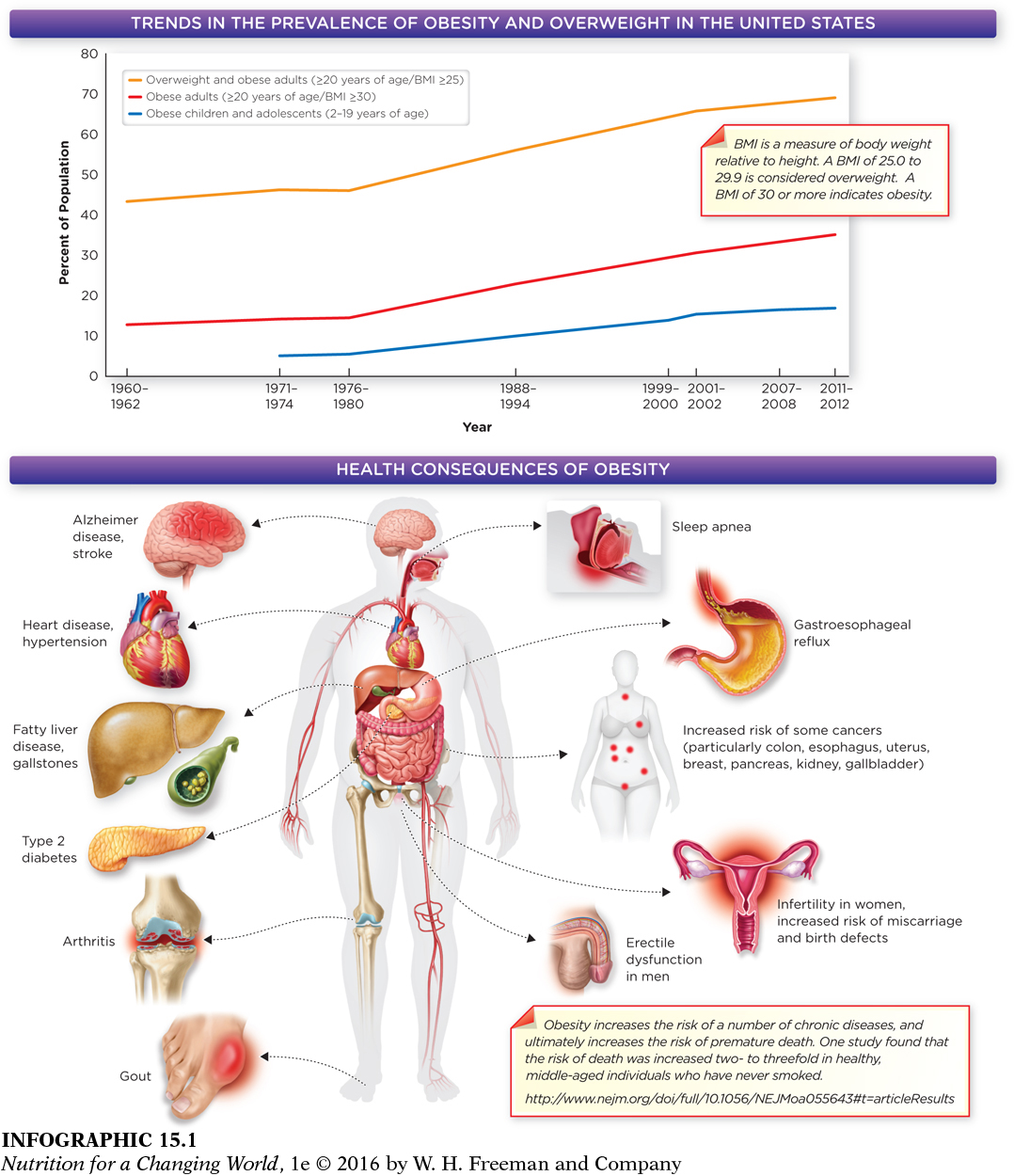Chapter Introduction
15
ENERGY BALANCE AND OBESITY

LEARNING OBJECTIVES
List the health consequences associated with obesity and describe how excess body fat increases the risk of developing these conditions (Infographics 15.1 and 15.3)
Describe the concept of energy balance (Infographics 15.2 and 15.4)
Identify and describe the components of total energy expenditure (Infographic 15.5)
Describe factors that affect basal metabolic rate (Infographic 15.6)
Describe activities that are examples of nonexercise activity thermogenesis (NEAT) (Infographic 15.7)
Describe factors that contribute to the development of obesity (Infographic 15.8)
Use body mass index and waist circumference to evaluate someone’s risk of chronic disease (Infographics 15.9, 15.10, 15.11)
Describe methods for determining body composition (Infographic 15.12)
Discuss strategies for successful weight loss and maintenance (Infographics 15.13 and 15.15)
When James Levine was 11 years old, he began a science experiment in his bedroom. His test subjects? Snails.
In glass-

To test this hypothesis, every night, between the hours of 9 PM and 5 AM, he’d wake up hourly with an alarm clock and mark on the glass where the snail had moved. At the end of the night, he’d trace each snail’s journey.
“Not surprisingly, I was constantly asleep at school,” Levine confesses.
By the time he finished his experiment, Levine had 270 snail tracings. What he discovered was that snails didn’t quite sort the way he thought. But they did have stereotypical styles of movement. “Joanna [he gave each snail a name] always does ziggidy-
The snail experiment had a lasting impact on Levine, who eventually went on to medical and graduate schools. Now, 35 years later, Levine has focused his love of experimentation on another slow-
OBESITY excess amount of body fat that adversely affects health
Levine, a professor of medicine at the Mayo Clinic and Arizona State University, is an expert on the physiology of weight gain and loss, with a special focus on obesity. Obesity—

Question 15.1
 Looking at the graph, how would you describe the change in the number of overweight (nonobese) adults?
Looking at the graph, how would you describe the change in the number of overweight (nonobese) adults?
To understand how the percentage of overweight (not obese) adults has grown, subtract the red line (obese adults) from the orange line (obese adults and overweight adults combined). The number of overweight adults has increased approximately 5% from 1960 to 2012 (from approximately 30% to 35%). The number of obese adults has increased 23% in that same time (from approximately 12% to 35%).
OVERWEIGHT a moderate amount of excess body fat or an excess amount of body weight from muscles, bone, fat, and water
Alarmingly, rates of obesity have sky-
Obesity is a complex disease that is influenced by multiple factors; genetics, environment, and behavior are the main causes. Genetics is seen as the primary factor determining an individual’s susceptibility to obesity. However, the rapid rise in the prevalence of obesity in the last few decades is largely attributed to changing environmental factors, because human genes have essentially remained the same over this time. For this reason it is said that, “Genetics loads the gun, and environment pulls the trigger,” because the environments that we live and work in can strongly affect our behaviors. For example, the built environment—our surroundings that are designed by humans—
Although almost everyone agrees that obesity seriously compromises our health and longevity, scientists are divided about just what is causing our waistlines to expand at an ever-